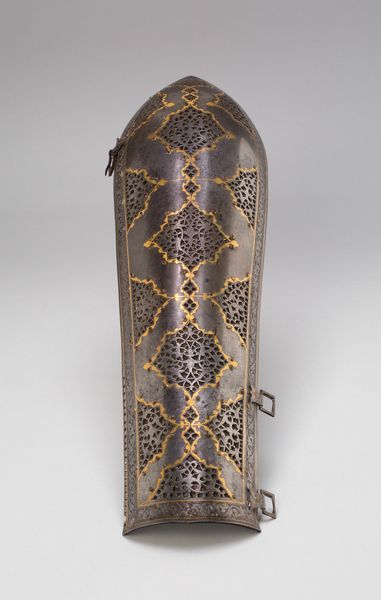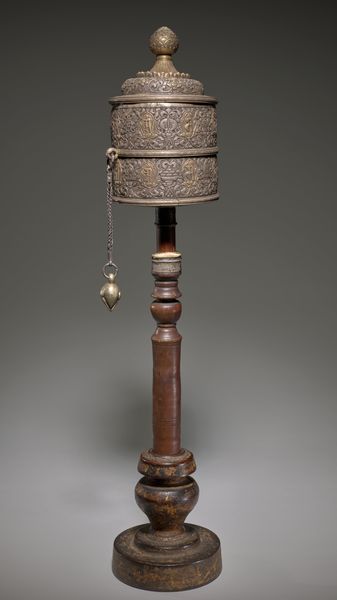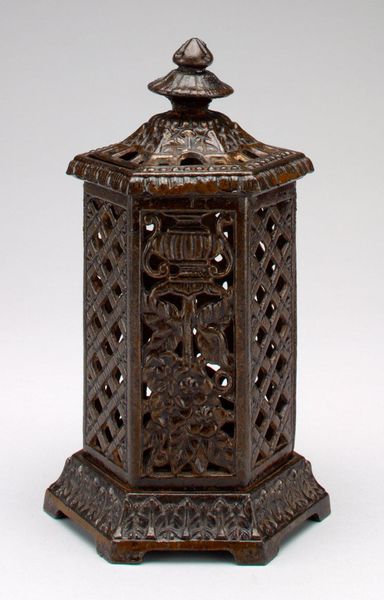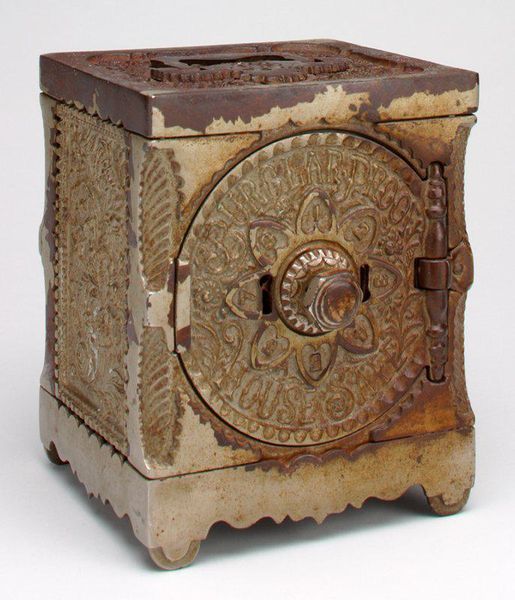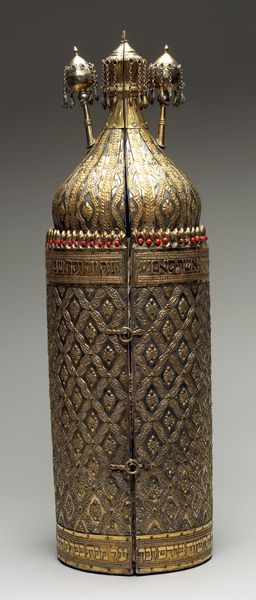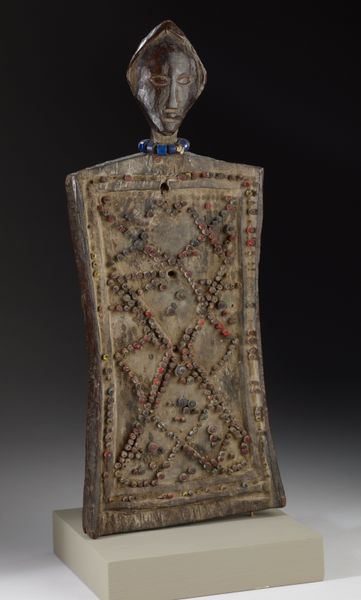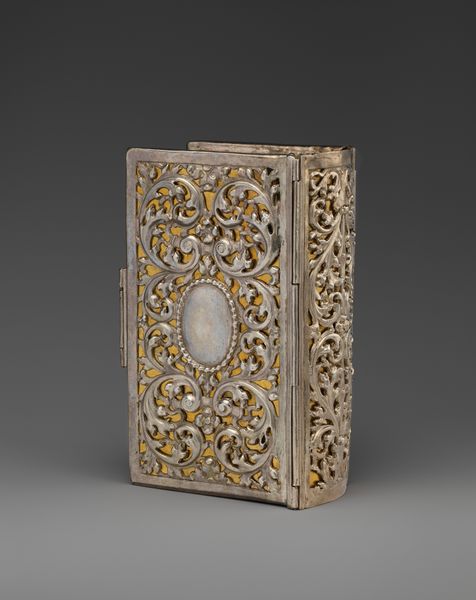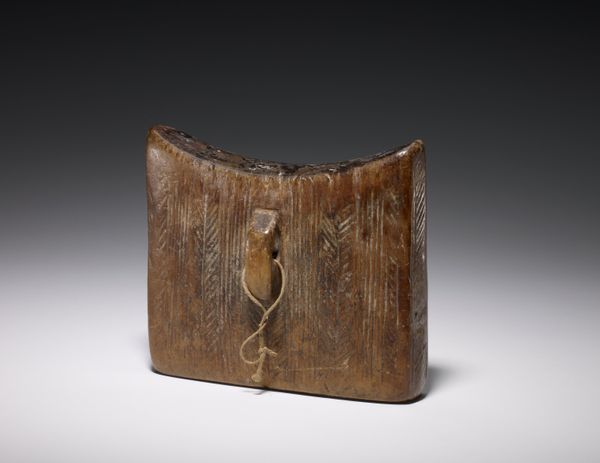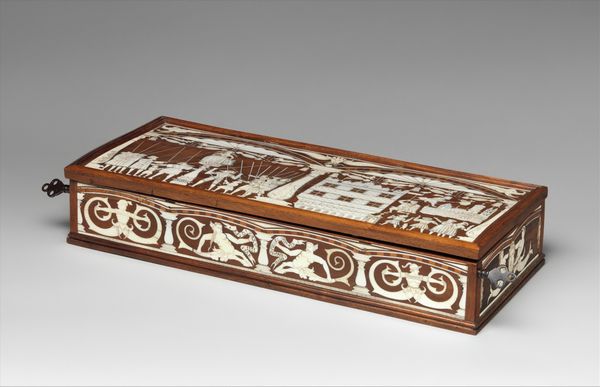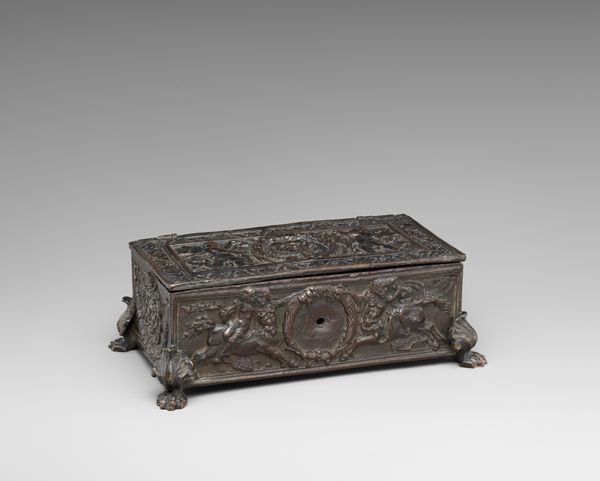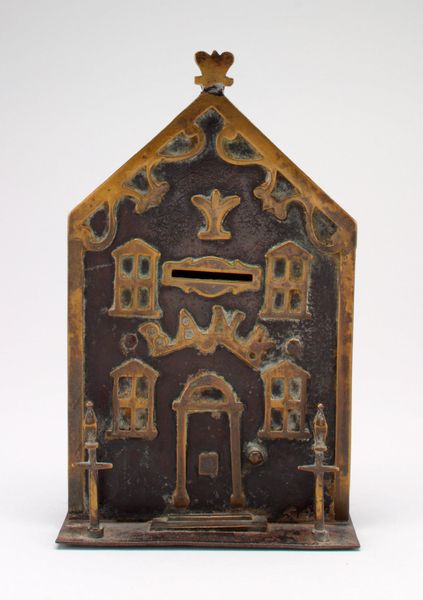
steel, metal, sculpture, wood, ivory
#
steel
#
metal
#
sculpture
#
11_renaissance
#
sculpture
#
wood
#
decorative-art
#
ivory
Dimensions: 4 3/4 x 2 1/2 x 2 3/4 in. (12.1 x 6.4 x 7 cm)
Copyright: Public Domain
Editor: We're looking at a cartridge box, dating back to about 1585. The piece, crafted by an anonymous artist, lives at the Minneapolis Institute of Art. It incorporates materials like steel, wood and ivory. I am really struck by the intricate ivory carvings set against the cold steel – the juxtaposition is so striking. What social and historical narratives can you read into this piece? Curator: It’s fascinating to consider how seemingly disparate materials like steel and ivory come together, isn't it? Let's think about the historical context: this cartridge box emerges from a time of significant social stratification, of rapidly developing military technology, and colonial expansion. How might this object be speaking to that reality? Consider the ivory, a material extracted from colonized lands. Who would have possessed such an item? What does that tell us about power and privilege in the late 16th century? Editor: The ivory certainly complicates things, doesn't it? The craftsmanship speaks of wealth, while its function ties it to warfare. Was the intention to glorify militarization? Curator: It's important to avoid straightforward conclusions like "glorification," but we should certainly think critically about how violence and luxury intersect here. The detailed craftsmanship suggests a commissioning patron, part of the social elite. The decorative, artisanal labor obscures the violence it facilitates; its purpose is as a status marker. Doesn’t the contrast of the materials underscore the stark inequalities that allowed such an object to exist? The sleek metal is rendered attractive with an overlay of an 'exotic' resource taken from exploited people, suggesting that dominance is indeed part of this Patron’s narrative. What do you think that suggests for us today? Editor: I see. The beauty of the object almost acts as a smokescreen. Thinking about its social context helps reveal a complex, and perhaps disturbing, power dynamic at play. It gives me a lot to consider about similar relationships of exploitation happening right now. Thanks for pointing that out! Curator: It’s in examining these complexities that we can learn the most from the art of the past. The ongoing legacy of colonialism is there for all to examine!
Comments
No comments
Be the first to comment and join the conversation on the ultimate creative platform.
